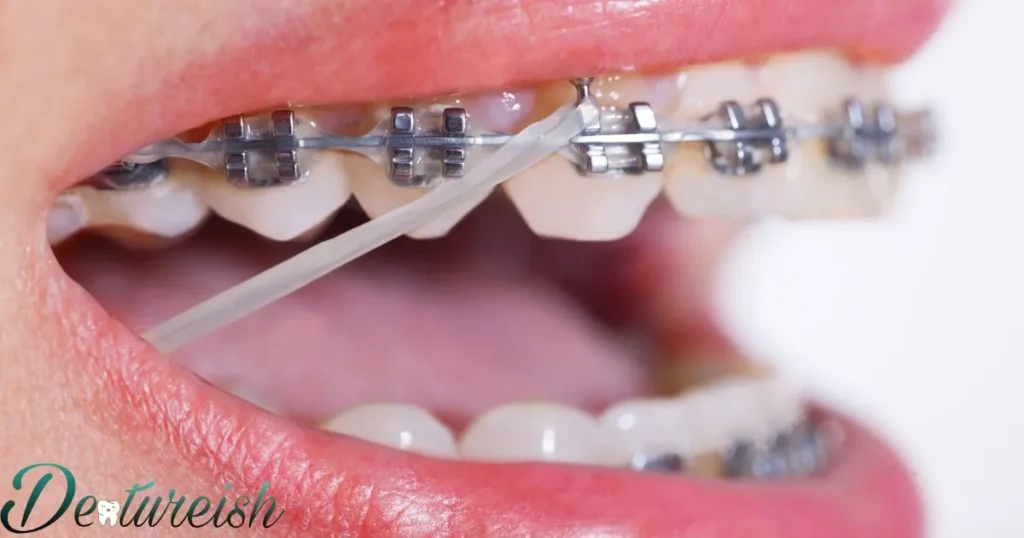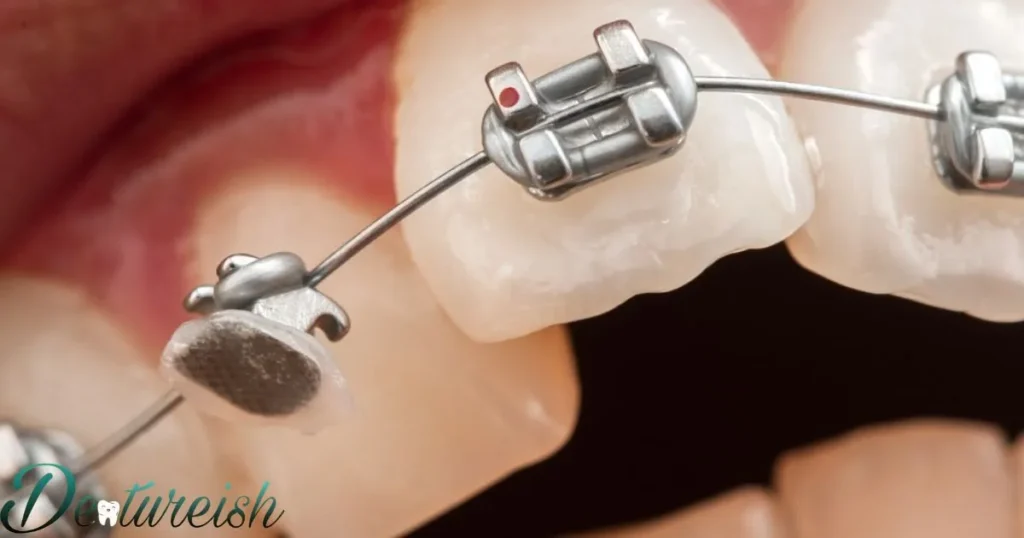Different braces wires stages refer to the various types of orthodontic appliances used during different phases of braces treatment. During the early stages, orthodontists often use thin, flexible archwires made of nickel-titanium. As treatment progresses, they later switch to thicker, stiffer stainless steel archwires capable of applying more force to the teeth.
Different Braces Wires Stages – this phrase encapsulates the step-by-step nature of orthodontic treatment. As the teeth gradually move into alignment, orthodontists methodically transition their patients through different sizes and types of archwires to control forces exerted on the teeth. Each stage serves a specific purpose in achieving the ultimate treatment goal.
Progressing through different braces wires marks advancement through the stages of orthodontic treatment. Wires apply light, controlled forces to guide teeth into proper alignment. Orthodontists carefully coordinate this tooth movement by using a sequenced combination of archwires. The wires work synergistically, each performing their role at the right phase of treatment.
Braces Key What Are The Different Stages Of Braces Wires?
Braces treatment typically involves three main stages that utilize different types of archwires. The initial alignment stage uses thin, round nickel titanium wires to begin straightening teeth. The intermediate working stage uses thicker stainless steel wires to correct bite issues. Finally, the finishing and detailing stage uses rectangular nickel titanium wires to settle teeth into their final positions.
Braces Key Initial Wire Stage
The initial wire stage involves thin, gentle nickel titanium archwires that begin to shift teeth into alignment. During this stage, the most dramatic tooth movements occur as teeth are leveled and irregularities are corrected. Appointments typically occur every 4-6 weeks during this fast-moving phase.
Braces Key Intermediate Wire Stage
During the intermediate stage, thicker stainless steel archwires are placed to focus on correcting bite issues. Additional appliances like elastics may be used to help guide the teeth and jaws into the proper positions. Appointments are usually spaced 6-8 weeks apart in this slower stage.
Braces Key Rectangular Wire Stage
The rectangular wire stage uses thicker wires that fit snugly into the slots of the brackets. This provides precision control to settle teeth into their final desired positions. Detail bends may be placed in the wires and elastics continued as needed. Appointments are scheduled every 6-8 weeks.
Braces Key Finishing Wire Stage
In the finishing stage, final adjustments are made to achieve the ideal occlusion and aesthetics. Brackets may be repositioned and rectangular nickel titanium wires placed. Multistranded wires may also be used to help settle teeth. The goal is to complete this stage in 3-4 months.
Braces Key What Materials Are Used For Braces Wires?

The most common materials used for braces wires are stainless steel, nickel-titanium alloy, beta-titanium alloy, and sometimes gold-plated wires. Each material has different properties that make them suitable for different stages of orthodontic treatment. The orthodontist selects wires based on the necessary strength, elasticity, and resilience needed during that phase of moving the teeth.
Braces Key Stainless Steel Wires
Stainless steel wires are very strong but not very elastic. This makes them ideal for applying controlled forces to teeth in the later stages of orthodontic treatment when teeth are already well-aligned. Stainless steel’s high strength allows Are Braces In Michigan the wires to maintain their shape without deforming while moving teeth.
Braces Key Nickel-Titanium Wires
Nickel-titanium wires are the most elastic. They can bend considerably then return to their original shape, applying light continuous pressure on the teeth. This elastic property makes nickel-titanium well-suited for the early phases of treatment when teeth are very crooked.
Braces Key Beta-Titanium Wires
Beta-titanium wires have moderate strength and elasticity between stainless steel and nickel-titanium. They are useful in the middle stages of treatment after initial alignment but when some elasticity is still beneficial. The beta-titanium alloy contains no nickel.
Braces Key Gold-Plated Wires
Gold-plated archwires may be used for aesthetic purposes. They have a gold coating over another metal wire, often stainless steel. The gold coating allows the wire to blend with gold braces for a more discrete look. The underlying wire provides the structural strength.
Braces Key How Do Braces Wires Move Teeth?
The archwires in braces apply a continuous gentle force on the teeth, causing the periodontal ligament to stretch on one side and compress on the other. This loosens the tooth slightly and stimulates bone remodeling – breaking down bone on one side and building new bone on the other side – which allows the tooth to move gradually in the direction of force of the archwire.
Braces Key Apply Light Continuous Force
Braces apply a light, continuous force through the archwires to move teeth. The orthodontist chooses wire strength and shape precisely to apply an optimal amount of force – enough to stimulate bone remodeling and tooth movement, but not so much as to damage tissues or move teeth too rapidly.
Braces Key Allow Bone Remodeling
The light force of braces archwires causes the periodontal ligament to stretch and compress, loosening the tooth. This stimulates osteoclasts to break down bone on one side of the tooth and osteoblasts to form new bone on the other side. This bone remodeling allows the tooth to move gradually over weeks and months.
Braces Key Different Wire Shapes
Orthodontists use archwires of different materials and dimensions depending on the stage of treatment. More flexible wires are used at first to align teeth, while stronger, rectangular wires are used later to precisely position teeth. The shape of archwires generates optimal force vectors and moments to control tooth movement in three dimensions.
Braces Key Anchorage Considerations
Since reciprocal forces act on teeth, anchorage considerations are important in treatment planning. Anchorage refers to controlling undesired tooth movements from the reactive forces. Orthodontists may use fixed appliances on key teeth or temporary anchorage devices (TADs) like mini-screws to prevent unwanted movements during treatment.
Braces Key What Problems Can Occur With Braces Wires?
Braces wires, also called arch wires, are a critical component in braces treatment to move the teeth into proper alignment. However, issues can arise with arch wires including breakage, poking wires causing discomfort, poor tooth movement if the wire is not applying optimal force, and undesired tooth movement if the wire places uneven forces on the teeth.
Braces Key Wire Breakage
Arch wires can break over time due to fatigue from chewing forces or trauma. If the wire breaks but fragments remain bonded to some teeth, those teeth may start to shift independently from the others, requiring orthodontic retreatment. Breakage is more likely with smaller diameter or softer wires.
Braces Key Discomfort And Ulceration
Poking or protruding wire ends can irritate the cheeks and tongue. This discomfort can sometimes lead to mouth ulceration if the irritation is excessive. Options to relieve discomfort until the wire can be repaired include orthodontic wax, cotton rolls, or clipping the protruding wire.
Braces Key Poor Tooth Movement
If an arch wire loses its strength over time or is the wrong size/type for the stage of treatment, it may not apply adequate force to continue moving the teeth properly. This can lead to slowed or stalled progress. The wire likely needs replacement.
Braces Key Undesired Tooth Movement
A wire that is slightly deformed or activates uneven forces can cause teeth to shift in unintended directions. This may require orthodontic retreatment to realign the teeth. Suspected causes include wire fatigue, bonding errors, and external impacts deforming the wire.
Braces Key How can Braces Wires be Maintained?

It’s important to be gentle with braces wires and avoid activities that could bend or break them. Use a mouthguard during sports to protect your braces. If a wire does become loose or broken, do not try to fix it yourself – contact your orthodontist immediately to have it repaired properly. Covering irritating wires with orthodontic wax can provide relief until you’re able to see your orthodontist.
Braces Key Proper Brushing and Flossing
Proper oral hygiene is critical for braces wearers. Food and plaque easily get trapped, so brush carefully after every meal with a soft brush and fluoride toothpaste. Pay special attention to areas around brackets and under wires. Floss at least once daily, gently working the floss under each wire. Using floss threaders or other specialized tools can make flossing easier.
Braces Key Avoid Hard or Sticky Foods
Avoid foods that could damage braces like hard candies, nuts, popcorn, ice, gum, caramel, etc. If you want to eat something hard or crunchy, cut it into small pieces first. Avoid chewing on non-food items as well. Sticky foods can also get stuck in braces, so stay away from them or rinse your mouth after eating.
Braces Key Use Orthodontic Wax
Orthodontic wax provides relief from braces irritation. Apply it to the metal brackets or wires that are poking or rubbing. It creates a smooth barrier for your cheeks and lips. Orthodontic wax is very malleable, so just pinch off a small piece and press it completely over the irritating part.
Braces Key Visit Orthodontist Regularly
It’s important to keep all scheduled adjustments and check-ups with your orthodontist. This allows them to monitor your progress and make timely changes. Report any damage, discomfort or questions promptly so they can be addressed. Continuing regular dental cleanings is also important during orthodontic treatment.
Frequently Asked Question
What Are The Different Wires Used During Braces Treatment?
The main wires used during braces treatment are stainless steel, nickel-titanium, beta-titanium, and gold-plated wires.
Why Do Orthodontists Change Arch Wires During Treatment?
Orthodontists change arch wires to adjust the forces on the teeth as needed during different stages of treatment.
How Do Arch Wires Move Teeth With Braces?
Arch wires move teeth by exerting light, continuous force on the teeth through the brackets to guide them into proper position.
What Problems Can Happen With Braces Wires?
Problems like breakage, discomfort, poor tooth movement, and undesired tooth movement can occur with braces wires.
How Can Patients Help Maintain Braces Wires?
Patients can maintain braces wires by proper oral hygiene, avoiding hard foods, using orthodontic wax, and visiting the orthodontist regularly.
Conclusion
Orthodontic treatment with braces involves several stages to gradually move the teeth and align the bite. The first stage after getting braces on is initial alignment, where the teeth are straightened. This takes a few months.
Next is correcting any issues with the bite, which can take longer. Rubber bands or springs may be used to bring the upper and lower teeth together properly. The final stage is fine-tuning and detailing before the braces come off. After braces, retainers are required to hold the teeth in position.
Proper oral hygiene and avoiding hard, sticky foods are critical during braces treatment. Regular adjustments and following orthodontist recommendations allows for progress through each stage. Understanding the overall process and timeline helps patients know what to expect at the different points of their braces journey. Consistently caring for braces supports optimal results.

